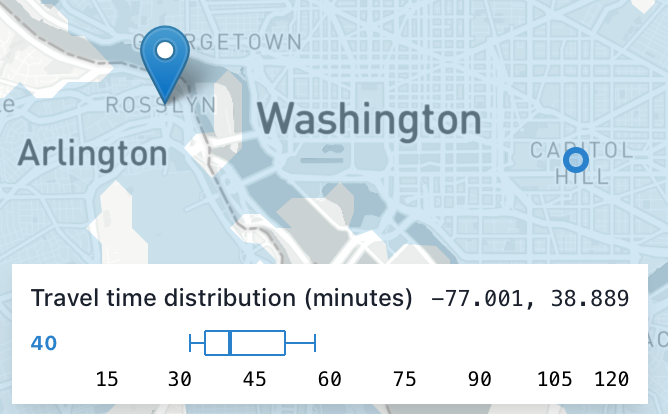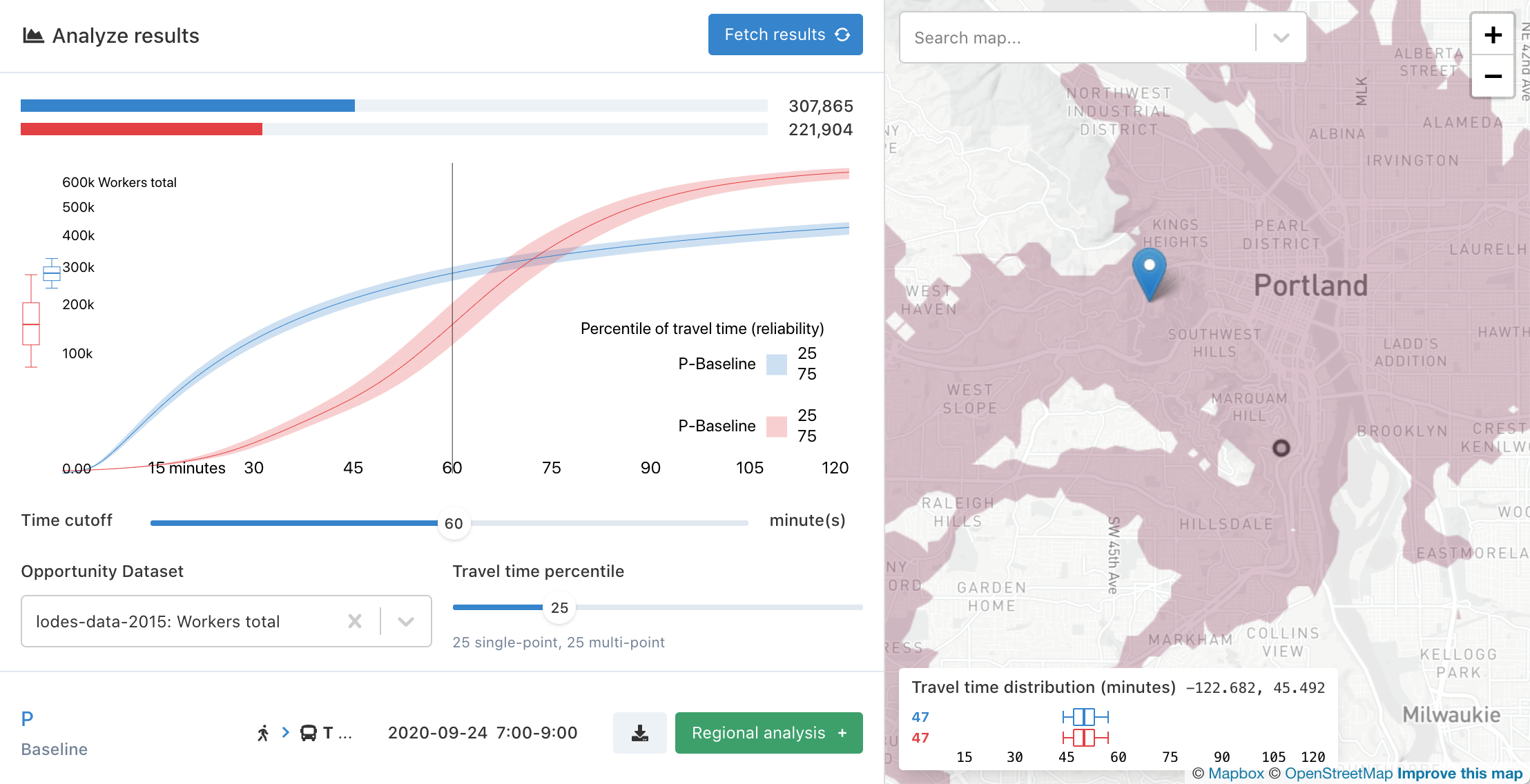- New recommended routing version v6.0.0 (read more below)
- Decay functions to enable gravity-type accessibility indicators (read more below)
- Routing engine fix for certain transfer times (read more below)
- Manage analysis settings with Presets (previously known as Bookmarks)
- New and improved User Manual
- Dynamic destination travel time distribution display


- Improved notifications about actions and errors.
- Streamlined analysis settings panel, with clearer toggling of travel modes
- More bug fixes and UI improvements.
Worker version v6.0.0
The new recommended routing engine version enables a few new features:
- Decay functions
- Regional analyses can handle grids with different extents
- Single point analysis now uses more consistent methods with regional analyses.
Routing engines v4 and v5 are still available for use, but do not include these new features.
Decay functions and gravity-type accessibility indicators
Conveyal Analysis can now apply decay functions rather than hard cutoffs in both regional and single-point analyses.


Rather than being the sum of all opportunities that can be reached in less than a specified number of minutes, the accessibility indicator can be more generally defined as the sum of all opportunities in the region, with each opportunity weighted (multiplied) by the value of a "decay function". It is now possible to select logistic (sigmoid), linear, and exponential decay functions in addition to the existing default step function. Learn more
Routing engine bug fix
Routing engine v6 fixes a bug that increased waiting times for certain transfers, specifically those from schedule-based routes to frequency-based routes. This underestimated the benefits of certain added/modified routes. When transferring from schedule-based routes (e.g. from baseline GTFS) to routes specified by add-trip or adjust-frequency modifications with exact times disabled, correct waiting times were under-sampled, and longer waiting times were over-sampled, biasing results toward longer total travel times. Note that this bug did not affect transfers from frequency-based routes to schedule-based routes, between two scheduled routes, or between two frequency-based routes.